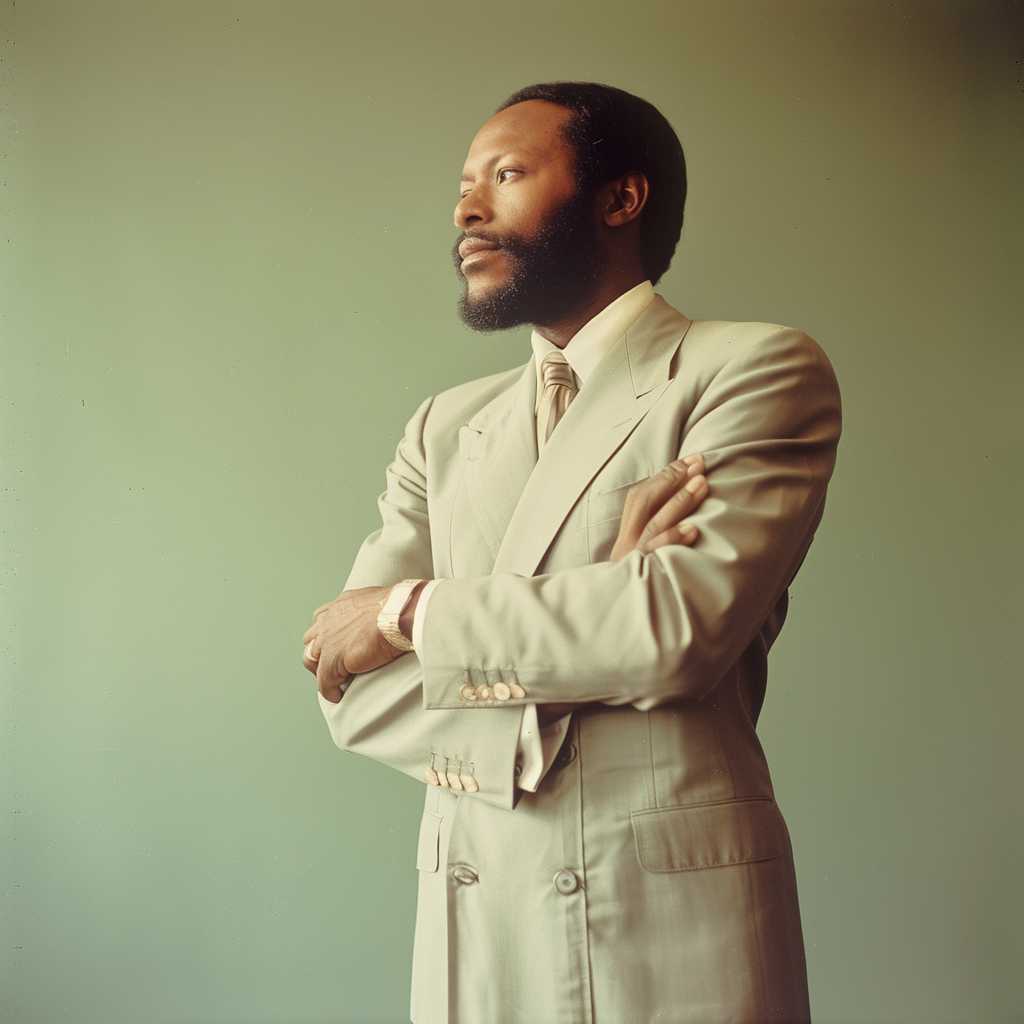Marvin Gaye: The Enduring Legacy of a Soulful Revolutionary
Marvin Gaye remains one of the most influential music icons of the 20th century, whose sultry voice, compelling lyrics, and innovative music transcended the boundaries of R&B to affect the wider landscape of popular music. His works touched on love, social issues, and spiritual quests with a poetic flair that earned him the moniker “Prince of Motown” and “Prince of Soul.” Marvin Gaye’s artistry did not just reflect the societal changes and turmoils of his time; it also helped to propel and influence those changes, marking him as a true revolutionary in soul music.
Early Years and Motown Beginnings
Born Marvin Pentz Gay Jr. on April 2, 1939, in Washington, D.C., his experiences growing up in the rigid religious household of his father, a pastor in the Apostolic Church, deeply affected his approach to music and life. Despite an often tumultuous family life, Gaye found solace in music, singing in church and eventually joining doo-wop groups like The Moonglows.
The breakthrough came when Gaye moved to Detroit and signed with Berry Gordy’s Motown Records in 1961. Starting as a session drummer for The Miracles and The Supremes, Gaye would soon break into superstardom. His smooth delivery partnered perfectly with Motown’s polished production style. Hits like “How Sweet It Is (To Be Loved by You)” and “I Heard It Through the Grapevine” catapulted Gaye to the forefront of Motown success.
Solo Success and Duet Partnerships
In addition to his solo success, Gaye developed a strong reputation for his duet recordings with female vocalists. The synergy between Gaye and Tammi Terrell was particularly notable. Together they produced timeless hits such as “Ain’t No Mountain High Enough” and “You’re All I Need to Get By.” Unfortunately, Terrell’s early death deeply affected Gaye; it marked a turning point that would influence the poignant direction his music took thereafter.
Gaye later garnered critical applause for his ability to craft albums with narrative depth, detachment from singles-based output, and tackling themes beyond love and relationships. This was powerfully evident in his groundbreaking album “What’s Going On,” where he infused social commentary on war, poverty, and racial injustice into lush melodies coupled with a full-bodied production style.
Social Consciousness in Soul Music
Released in 1971, “What’s Going On” was reflexive of Gaye’s inner turmoil and responsive to external societal strife; a concept album that was rich in its meditation on what it meant to be human, black, and aware in America at the dawn of a new decade filled with upheaval. Songs like “Mercy Mercy Me (The Ecology)” combined environmental concerns with soulful rhythms.
This remarkable transition represented something greater than just an artistic detour. It signified an artist imposing personal vision over established commercial expectations – challenging both audiences and Motown to engage with music as an agent for change.
The Final Years: Battling Demons and Continued Creativity
Personal struggles began to mar the latter part of Gaye’s life, including conflicts with tax authorities prompting self-imposed exile to Europe and battles with substance abuse. Still, creative sparks would occasionally flare up as evidenced through releases like “Midnight Love,” featuring the hit single “Sexual Healing” that suggested a return to form for Gaye’s troubled soul.
Sadly, Marvin Gaye’s life ended tragically when he was shot dead by his father after an argument on April 1, 1984 – a day before his 45th birthday. The event shook not only the musical community but also the world at large; yet it cemented his status as one of the genre’s most miscarried talents.
Legacy: Influence Beyond Life
Though his life was cut short, Marvin Gaye’s influence endures. His innovations laid down paths that contemporary R&B artists tread upon today—melding social relevance with commercial viability in their musicscapes. His posthumous Grammy Lifetime Achievement Award in 1996 barely skims the surface acknowledgment of an artist who reimagined what soul could convey way beyond simple tunes of heartache or romance.
